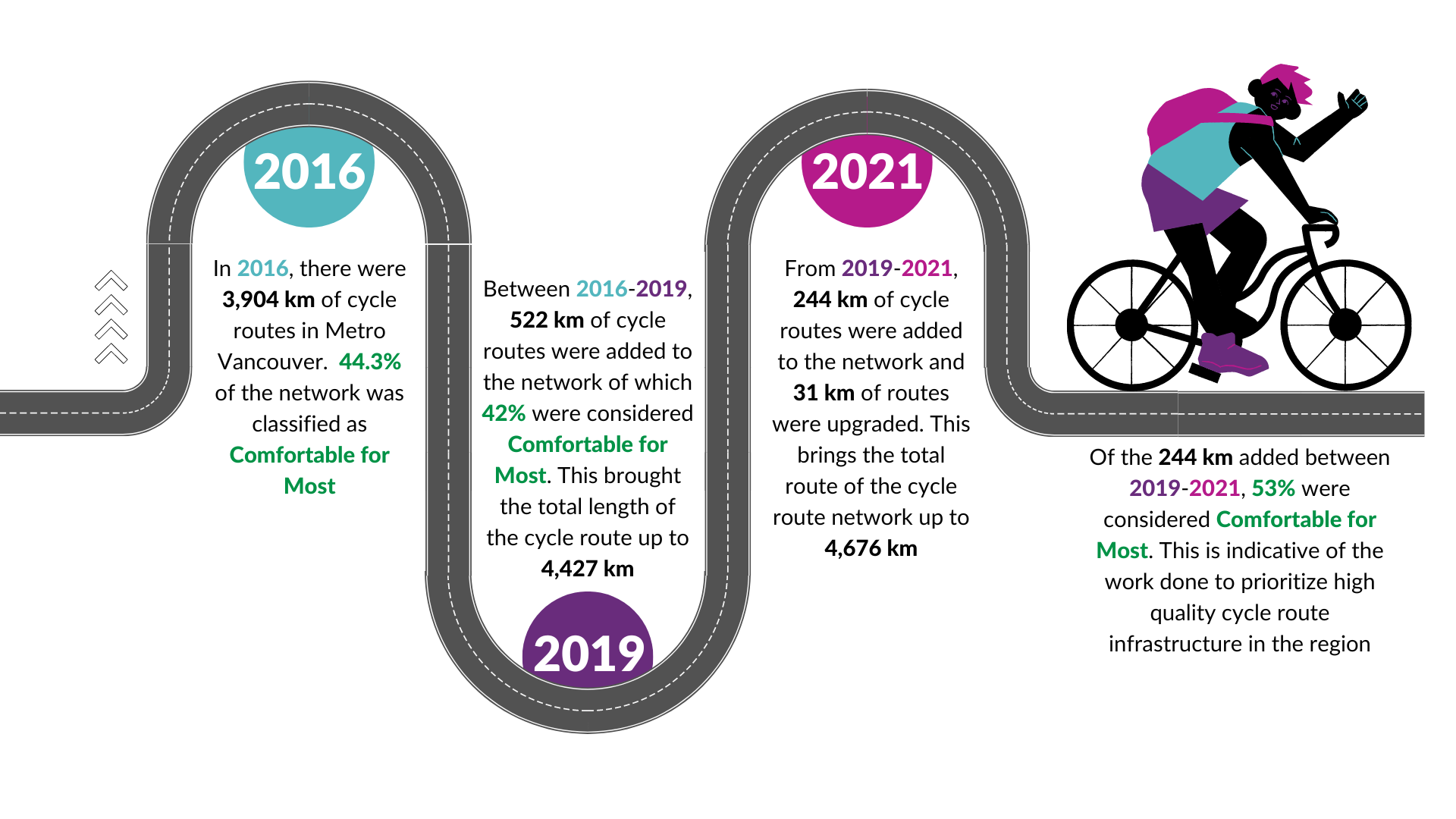Main menu
The State of Cycling in Metro Vancouver: 2016-2021

Benchmarking Our Regional Bike Route Network's Growth, Use, Safety, Health, and Climate Resiliency.
![]() Download the Report (PDF)
Download the Report (PDF)
Vancouver Sun: Safety improves but equity lags in Metro Vancouver bike infrastructure
Tricity News: It's getting safer to cycle in the Tri-Cities, but gaps remain
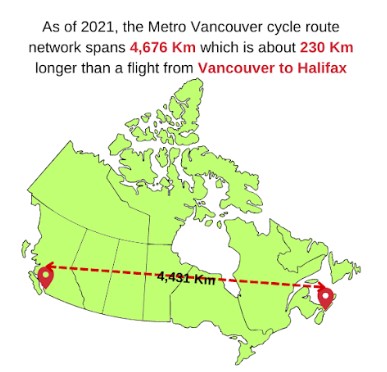 HUB Cycling is pleased to share our second benchmarking analysis of the Metro Vancouver bike route network. This second benchmarking report is the next stage in HUB Cycling’s ongoing State of Cycling initiative. Through this initiative, HUB Cycling is engaging with TransLink, municipalities, researchers, and other partners to collect data on and analyze our regional bike route network over time.
HUB Cycling is pleased to share our second benchmarking analysis of the Metro Vancouver bike route network. This second benchmarking report is the next stage in HUB Cycling’s ongoing State of Cycling initiative. Through this initiative, HUB Cycling is engaging with TransLink, municipalities, researchers, and other partners to collect data on and analyze our regional bike route network over time.
At the core of The State of Cycling is a detailed GIS data set with associated comfort ratings for every formal bike route segment within Metro Vancouver. This new report builds on the first benchmarking analysis released in 2020 after the bike route GIS data set was first developed.
The second benchmarking report profiles bike route growth, comfort, and types. It compares 2016 and 2021 Canadian Census data about cycle commuting with State of Cycling network data for the same years and also looks at network development relative to road safety data and research.
New for the second benchmarking report is a broader health and climate resilience focus, informed by staff and faculty of Vancouver Coastal Health, UBC, SFU, and TransLink. The report includes analyses of how factors such as slope, noise, pollution, heat and tree cover, and flooding may inform network siting and design.
Metro Vancouver Cycle Route Timeline
Report Highlights
The location and design of cycling infrastructure strongly influence many people’s decisions to use bicycles for transportation. When someone is deciding to bike or not, they consider many potential motivators and deterrents.
Motivators for cycling are factors that encourage cycling through an associated benefit or the removal of barriers to engage in the activity, while deterrents are factors that prevent or make it more difficult to engage in the activity. A bike route 400 meters or less from someone’s home was identified as a positive motivator for cycling and the distance people will generally detour from a direct route to access a high-quality bike route. While off-street bike paths are identified as the most preferred route types by people cycling, the residential street bike routes network is very important for cycling in Vancouver. Easy access to residential street bikeways had strong positive associations with cycling commute mode share, but proximity to painted bike lanes did not have the same association. Proximity to steep slopes is also associated with lower neighbourhood-level cycling mode share, though the association is weaker than for proximity to high-quality cycling infrastructure. A full list of major motivators and deterrents to cycling are listed in the table below.
2016-2021 Metro Vancouver Network Comparative Analysis by Municipality

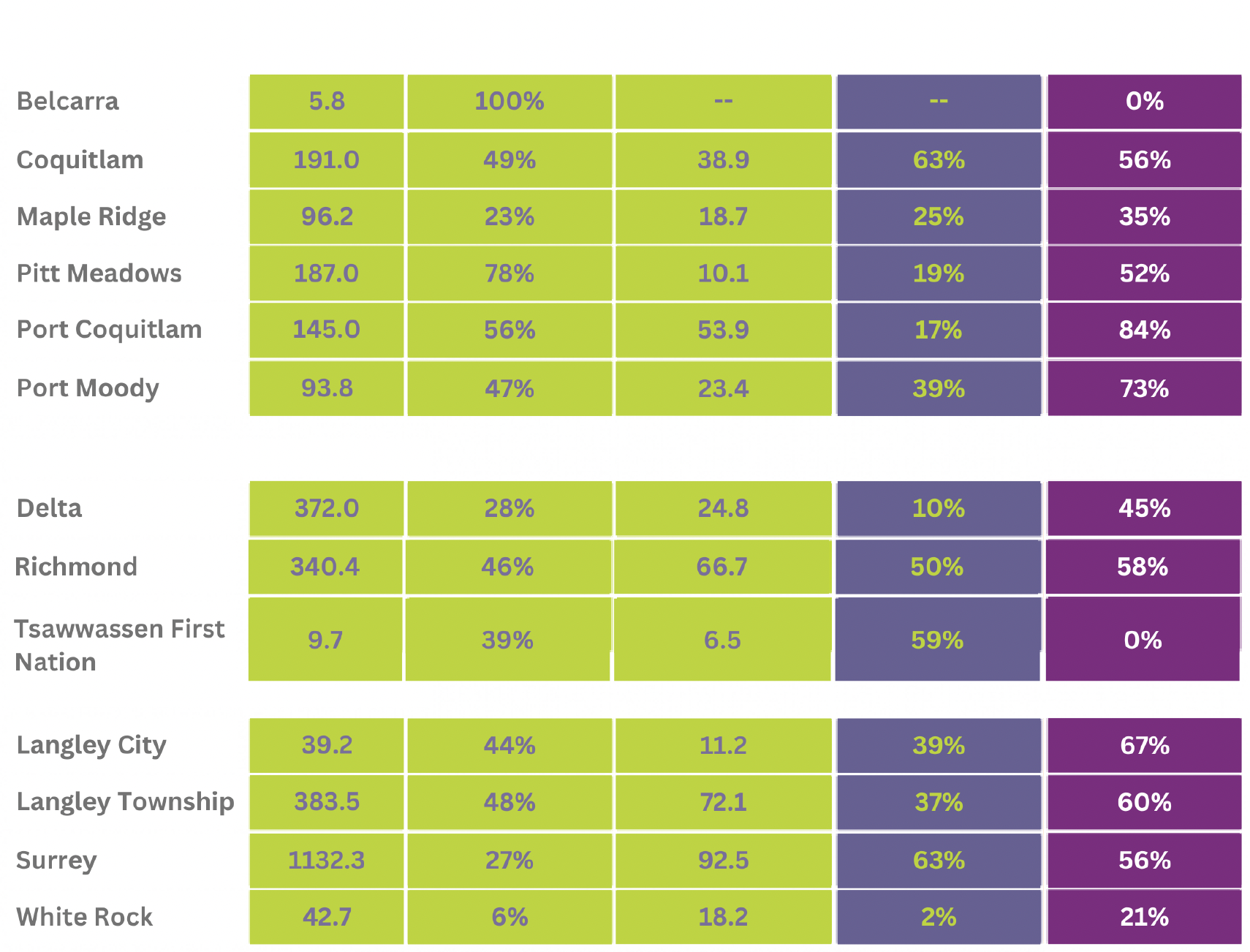
Regional statistics from the 2019 State of Cycling Benchmarking Report are available here.
Metro Vancouver's Bike Route Network by Comfort Rating
2016 and 2021 Metro Vancouver Cycle Route Total Kilometres by Comfort Classification
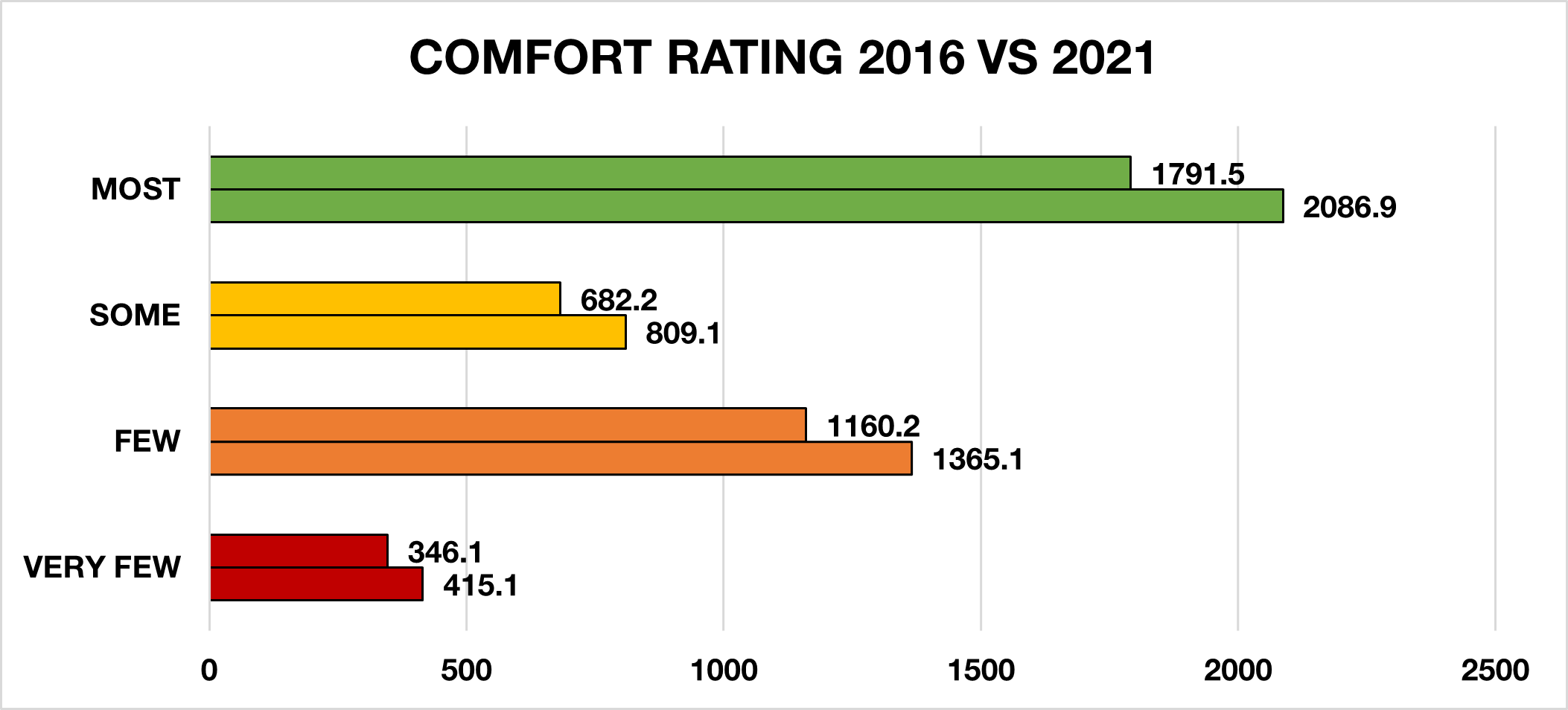
Total 2016 and 2021 Metro Vancouver Bike Network Kilometres by Facility Type
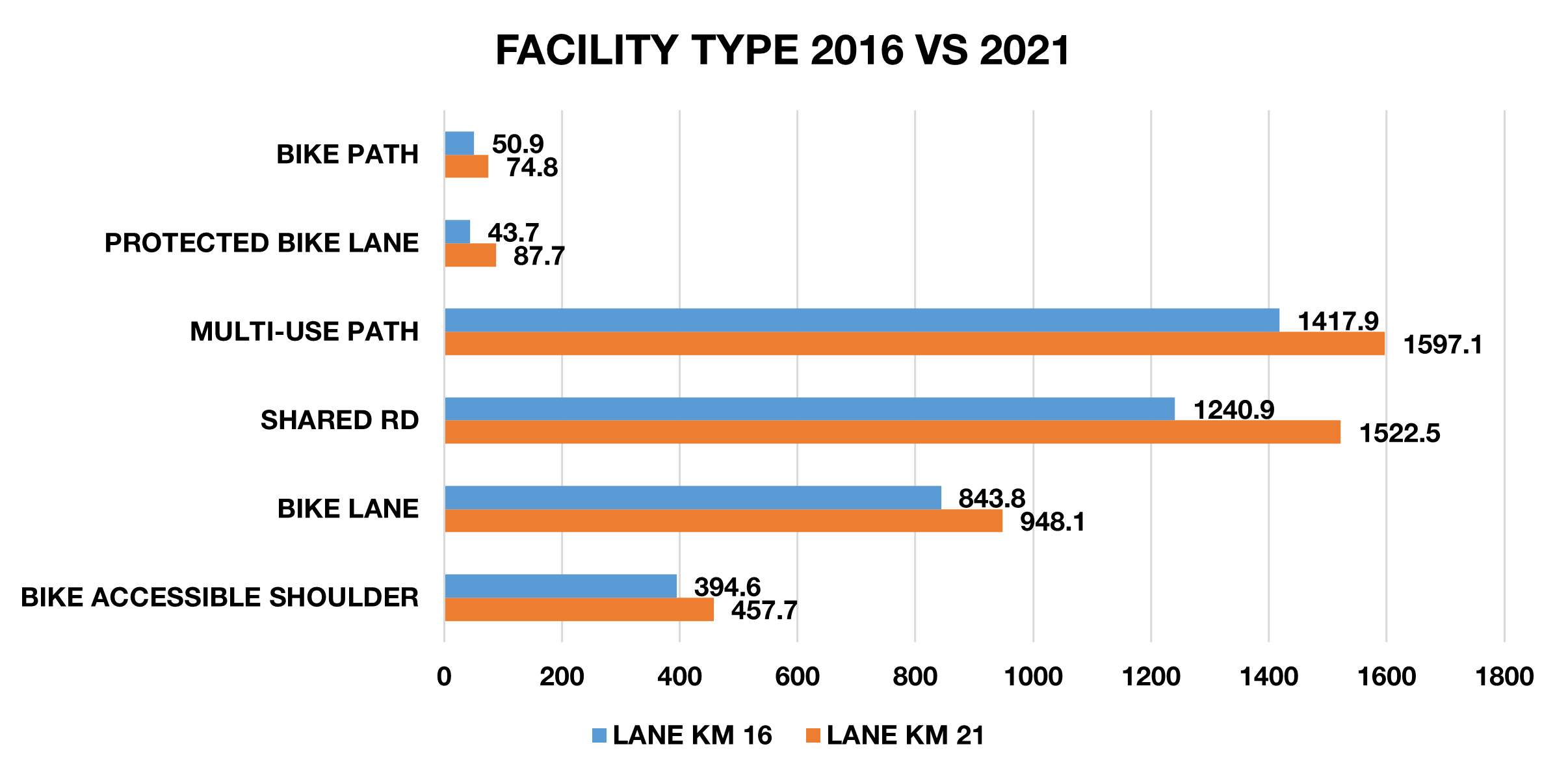
Cycling Accessibility and Equity-Deserving Groups
Canadian Census Female Ridership Reporting
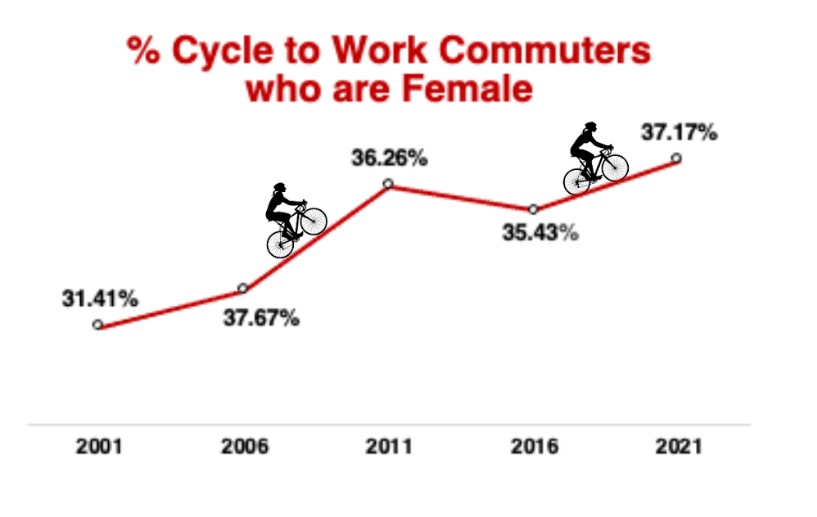
Cycling, Racial Identity, and Ethnicity
Racial and ethnic minorities are under-represented in usage of the Metro Vancouver cycle route network as observed in commuting to work mode share data in the region. Between 2016 and 2021, there were only small changes in ridership based on people’s racial identity. Metro Vancouver Census respondents who identify as white account for the most cycling and car/carpool usage for work commutes and the least amount of walking and public transit use.
Cycling and Disabilities
The use of Metro Vancouver’s cycle route network by people with disabilities is not yet well understood. With the advent of e-mobility and the overall growth of cycling, there is an increasing range and quality of adaptive cycling vehicle types. They enable more people with physical and neuro-cognitive disabilities to ride. However, the perceived safety, comfort, and accessibility of the bike route network is likely even more of a factor in encouraging or discouraging cycling by people with different abilities.
Youth Cycling
Our bike route network is intended to serve the region’s population for generations to come. Introducing youth to bikes as a viable form of life-long transportation, rather than just an activity of childhood, is an important element of getting our bike route network used immediately and over the long term.
Numbers and Percentages of Schools and Students Who Received Active Transportation Cycling Courses in 2022 and 2023
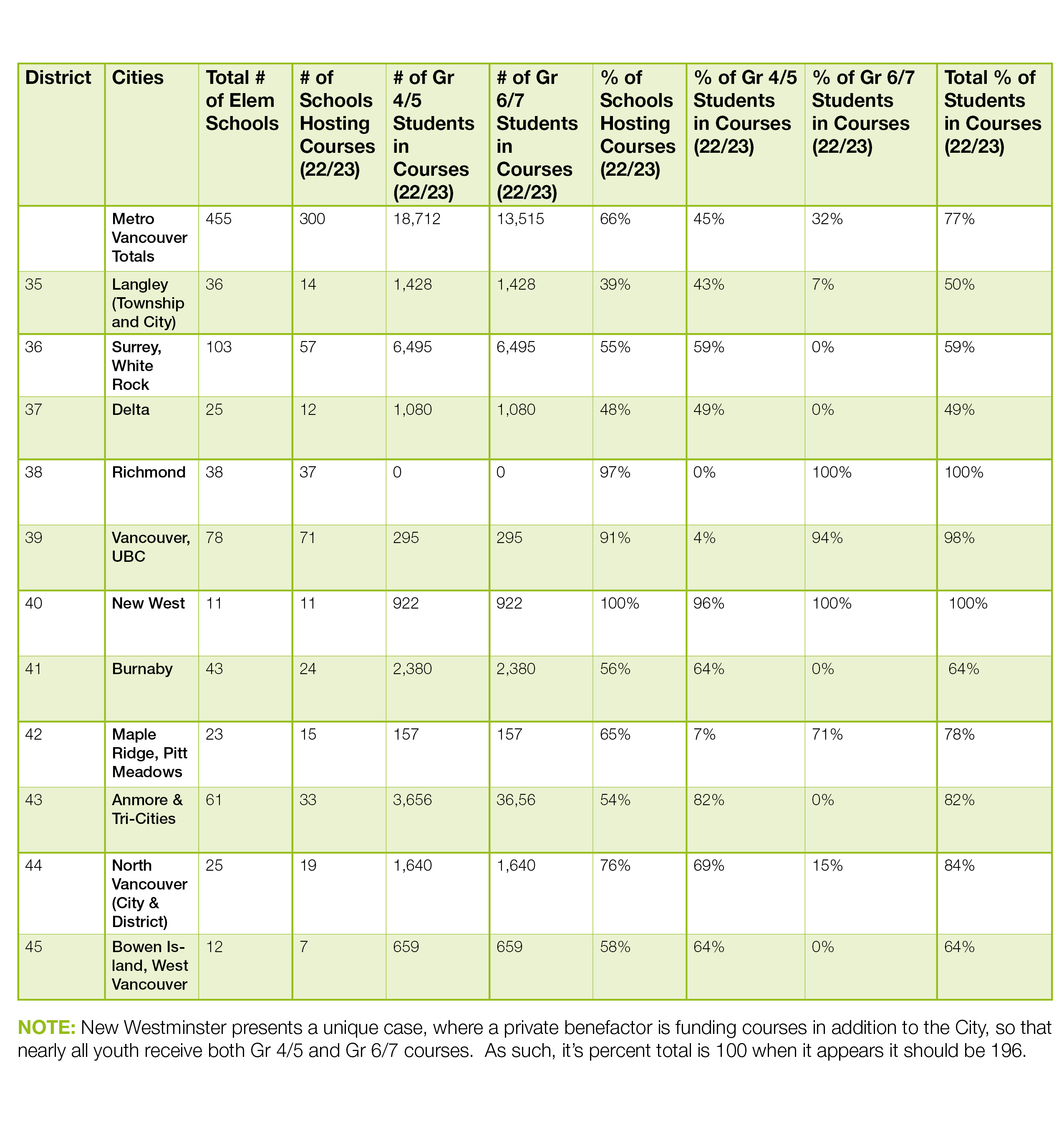
Bike Route Network Context
The location and design of cycling infrastructure strongly influence many people’s decisions to use bicycles for transportation. When someone is deciding to bike or not, they consider many potential motivators and deterrents. Motivators for cycling are factors that encourage cycling through an associated benefit or the removal of barriers to engage in the activity. At the same time, deterrents are factors that prevent or make it more difficult to engage in the activity.
What Deters and Motivates Cycling?
Research by Dr. Kay Teschke
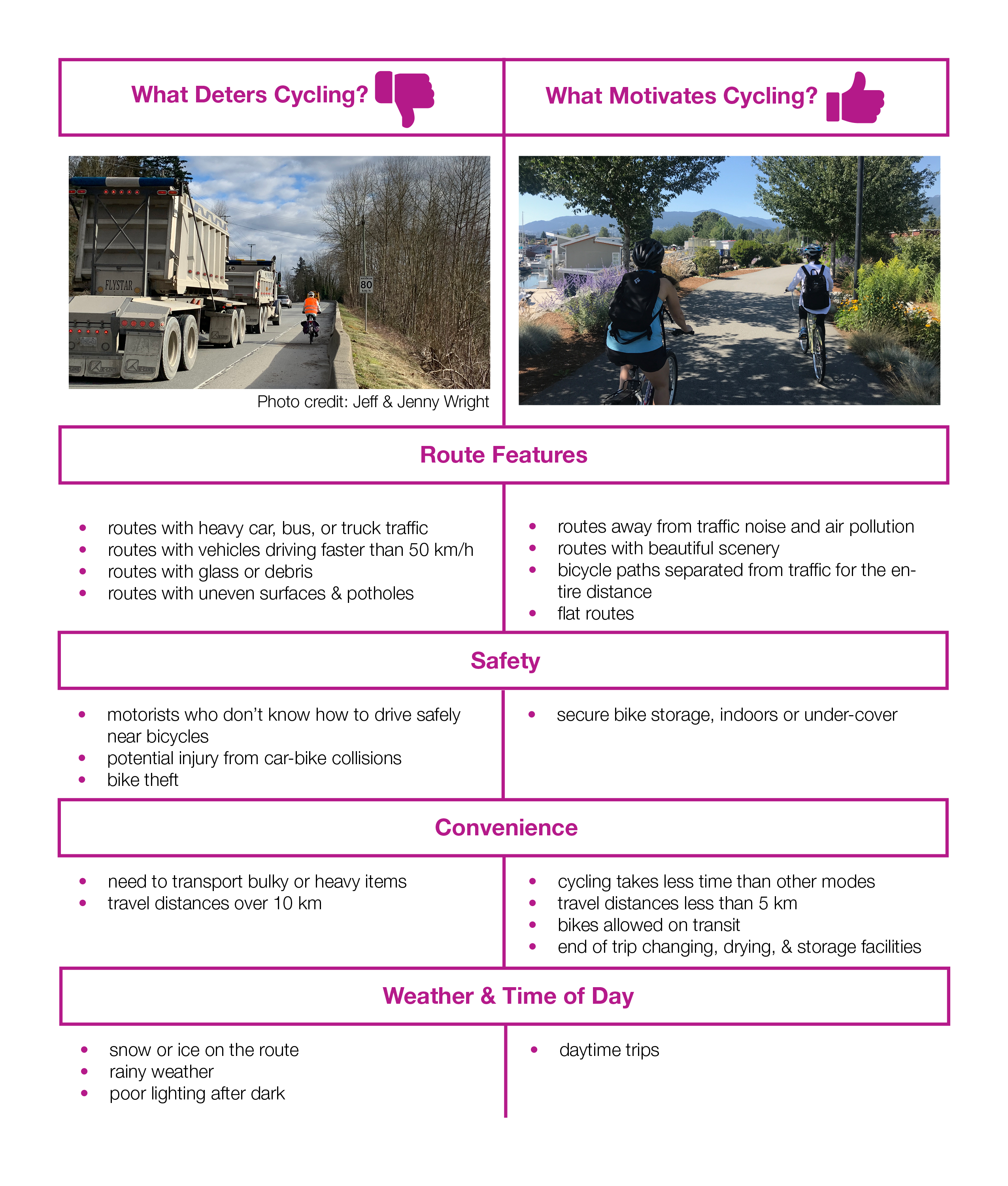
How do we Classify Metro Vancouver's Bikeway Facilities?



Next Steps
HUB Cycling is pleased to have had the opportunity to lead this benchmarking research about the Metro Vancouver bike route network and to engage with a broad group of enthusiastic collaborators in doing so. This benchmarking project analyzed the evolving quality, comfort, safety, and completeness of the network relative to our initial Benchmarking project in 2019. It highlighted health and climate-resilience factors that impact the network’s comfort, safety, and accessibility. It also identified where we are missing data and lacking research into key topic areas.
HUB Cycling developed this report primarily to inform those directly involved in funding, planning, and building cycling infrastructure. We hope it will prompt additional attention to and research into the range of relevant health, safety, and climate resiliency factors we have highlighted through this collaborative research endeavor. We sincerely hope our focus and findings are helpful to future infrastructure planning.
HUB Cycling and our research collaborators hope this Benchmarking report will spur new targeted research. We look forward to directly contributing to research efforts where opportunities arise. HUB Cycling welcomes opportunities for dialogue with stakeholders about our focus on and findings from this research.
Please contact HUB Cycling about the State of Cycling Benchmark #2 report at research@bikehub.ca.
The Research Team
A collaborative team of HUB Cycling staff and the University of British Columbia School of Kinesiology academics completed this project:
Tim Davidson, Chelsea Krahn and Timothy Welsh - HUB Cycling
Matthew Skirrow and Dr. Michael Koehle - University of British Columbia School of Kinesiology
Acknowledgments
HUB Cycling thanks our Project Funders and Sponsors:

Thanks also to the many Project Advisors and Collaborators
Project Advisory Committee:
Laura Chow - Vancouver Coastal Health Authority, Dr. Rebecca Mayers - TransLink, Andrew Picard - TransLink, Dr. Kay Teschke - University of British Columbia, Dr. Meghan Winters - Simon Fraser University
Data Sets Provided and Data Analysis Informed By:
Dr. Jeff Brubacher - University of British Columbia, Mei Chong - Provincial Health Services Authority, Dr. Michael Brauer- University of British Columbia, Angie Weddell - University of British Columbia / City of Vancouver, Lina Jae - University of British Columbia, Dr. Meghan Winters - Simon Fraser University, Dr. Alex Bigazzi - University of British Columbia, Vancouver Coastal Health, BC Emergency Health Services, Statistics Canada, Mobi by Rogers Public Bike Share, City of Vancouver, Insurance Corporation of BC
Graphic Design:
Rianna Fiorante
How can you help?
If possible, consider donating to HUB Cycling or subscribing to our e-newsletter to support our advocacy work in expanding the cycling network across the region.
Your support enables us to make an impact on people of all ages and abilities and promote access to cycling across regional and diverse communities.
What is the Impact of Your Generous Gift?
- $2,500 will help us develop programs for communities that may face social, cultural, and/or financial barriers to cycling.
- $250 helps us provide infrastructure research support for an advocacy project like cycle highways phase 2 analysis.
- $100 will help HUB organize online learning to encourage people of all ages and abilities to bike, like our Biking for Mental Health webinar.


